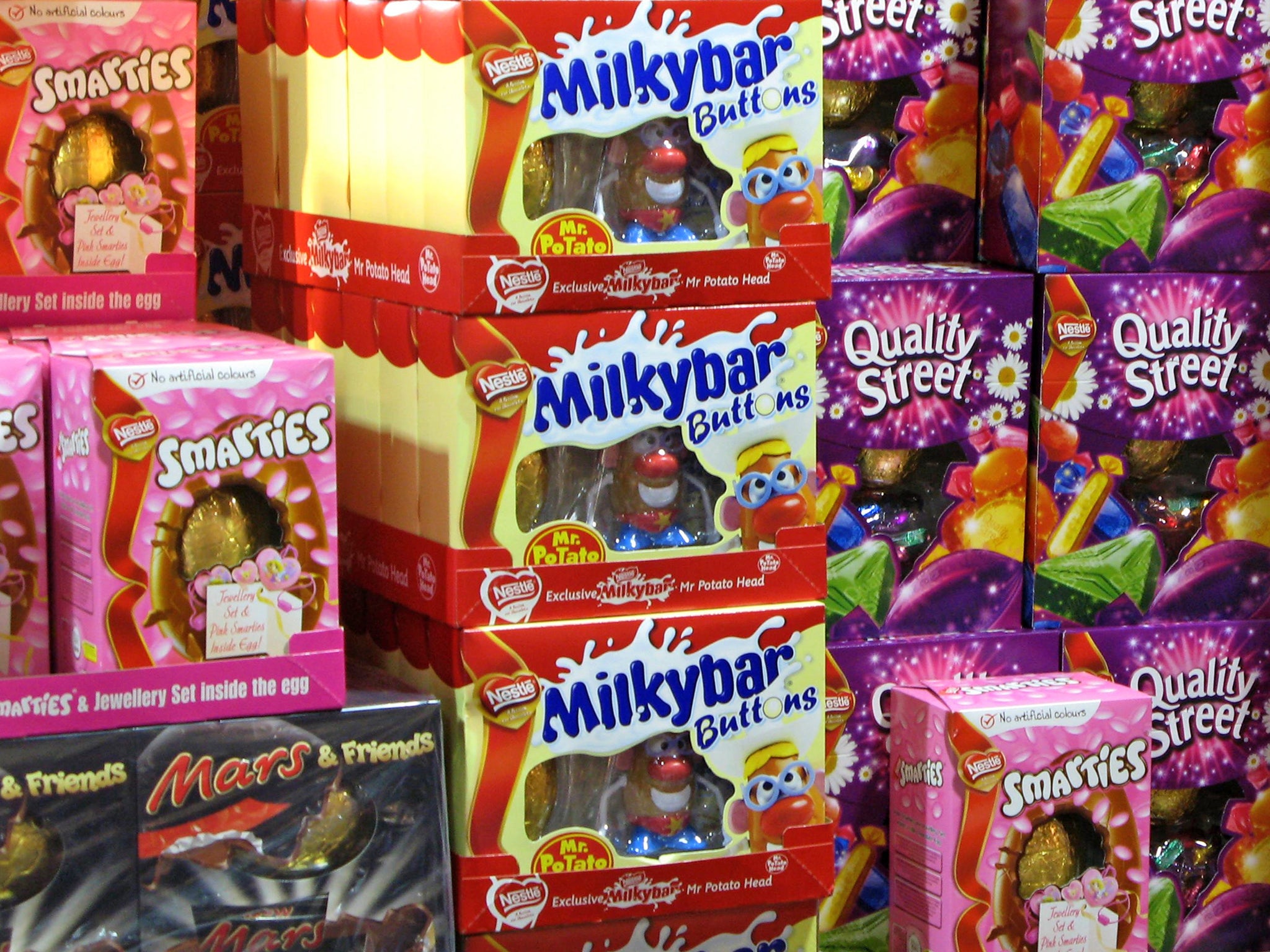Extent of environmental damage caused by egg packaging and greenhouse gas emissions over Easter holiday revealed
New report calls on chocolate companies to cut out plastic and ‘sacrifice the presentation of their eggs for the presentation of their values’

Your support helps us to tell the story
From reproductive rights to climate change to Big Tech, The Independent is on the ground when the story is developing. Whether it's investigating the financials of Elon Musk's pro-Trump PAC or producing our latest documentary, 'The A Word', which shines a light on the American women fighting for reproductive rights, we know how important it is to parse out the facts from the messaging.
At such a critical moment in US history, we need reporters on the ground. Your donation allows us to keep sending journalists to speak to both sides of the story.
The Independent is trusted by Americans across the entire political spectrum. And unlike many other quality news outlets, we choose not to lock Americans out of our reporting and analysis with paywalls. We believe quality journalism should be available to everyone, paid for by those who can afford it.
Your support makes all the difference.Those concerned about the rampant consumerism of religious holidays now have another thing to consider – the environmental impact of Easter eggs.
Not only has Easter egg packaging been deemed excessive in a new report, analysis by a team of scientists at the University of Manchester has revealed the huge carbon footprint associated with chocolate production.
With plastic pollution the environmental issue of the moment, it is perhaps unsurprising that egg packaging has been a target for criticism.
Nearly 150 million Easter eggs are sold in the UK every year, resulting in an estimated 3,000 tonnes of plastic waste.
In an introduction to her report on excess Easter egg packaging entitled Choc Horror, deputy leader of the Liberal Democrats Jo Swinson describes the traditional treats as “a symbol of the excess plastic packaging that is still prevalent across the food industry and other consumer industries”.
She wrote: “Millions of us watched Blue Planet last year and witnessed the shocking levels of plastic waste in our oceans. None of us wants the packaging from our tasty Easter treats to contribute to ocean pollution.
“It is disappointing that Easter egg manufacturers have not been more proactive in reducing levels of plastic in their packaging, so I am calling on them to pledge to eliminate plastic in next year’s Easter eggs.
“If manufacturers truly want to cut the use of plastics they must sacrifice the presentation of their eggs for the presentation of their values.”
She emphasised that the plastic waste from Easter eggs is symptomatic of a wider problem across consumer industries.
Luxury brands were found to be the biggest culprits in terms of excessive packaging, with Lindt branded the “worst offender” and Thorntons not far behind.
For an average Lindt egg, chocolate itself was found to take up less than one sixth of the overall box and the packaging took up over a third of the total weight.
Ms Swinson’s findings are a follow-up on a previous report released in 2012.
Her report concluded that packaging levels in Easter eggs had not improved in the six years that have elapsed since then – with around one quarter of an average Easter egg’s weight coming from packaging.
Warnings about excessive packaging were echoed in a study published in the journal Food Research International by a team of scientists at the University of Manchester.
Their study set out to establish the carbon footprint of chocolate, taking into consideration not only its packaging but also the ingredients and manufacturing processes used to produce it.
“Most of us love chocolate, but don’t often think of what it takes to get from cocoa beans to the chocolate products we buy in the shop,” said Professor Adisa Azapagic, head of sustainable industrial systems at the university.
As cocoa production is cultivated around the equator, primarily in West Africa and Central and South America, the emissions involved in simply transporting it to the UK are considerable.
Professor Azapagic’s study estimated that the UK chocolate industry produces about 2.1 million tonnes of greenhouse gases every year – roughly equivalent to the annual emissions of Belfast.
“It is true that our love of chocolate has environmental consequences for the planet. But let’s be clear, we aren’t saying people should stop eating it,” said Professor Azapagic.
“The point of this study is to raise consumers’ awareness and enable more informed choices. Also, we hope this work will help the chocolate industry to target the environmental hotspots in the supply chain and make chocolate products as sustainable as possible.”
Join our commenting forum
Join thought-provoking conversations, follow other Independent readers and see their replies
Comments